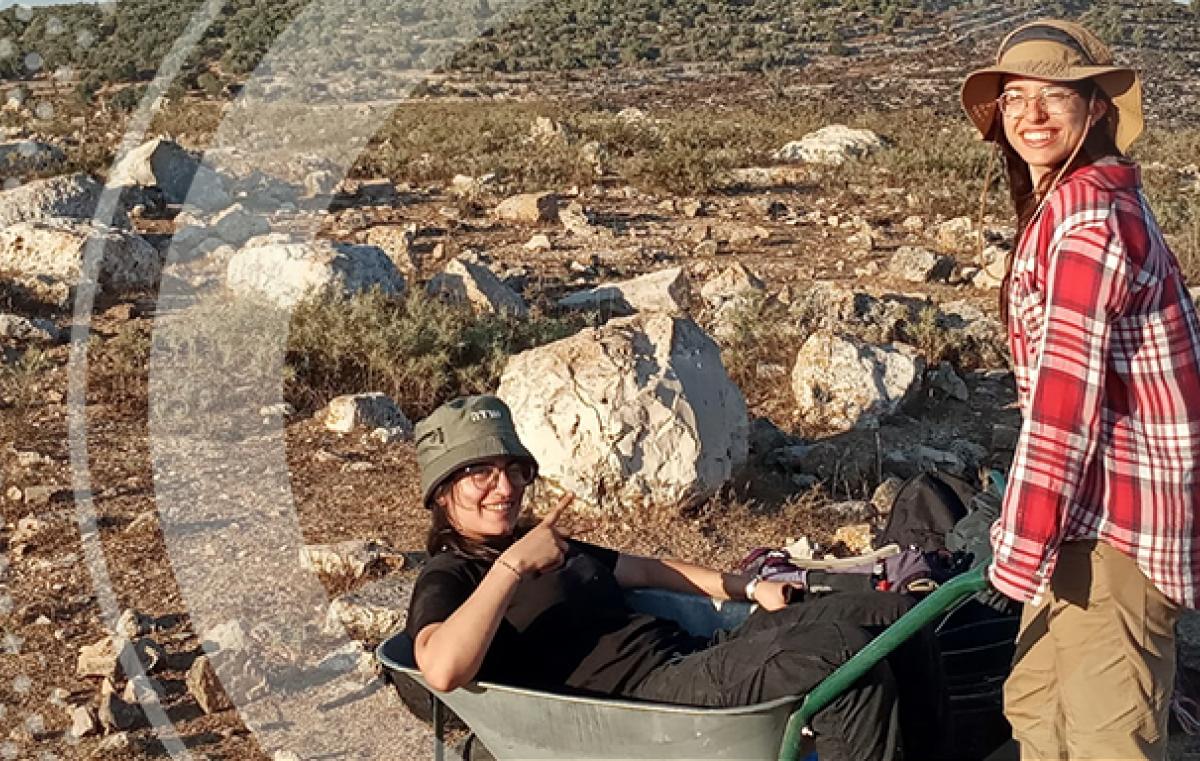First Archeological Excavations at Tel Tibna (Timna)
The ancient mound was inhabited for some 4,000 years and is considered to be the town in which Joshua bin Nun lived and was buried

The first archeological excavations at the ancient site of Tel Tibna began this week. The site, which is located in southwest Samaria and is referenced in various historical documents, was inhabited for some 4,000 years and is considered by ancient sources to be the town in which Joshua bin Nun lived and was buried.
The excavations are being led by Dr. Dvir Raviv together with a delegation of students from the Department of Land of Israel Studies & Archeology at Bar-Ilan University and volunteers from Israel and abroad.
Tel Tibna was inhabited from Bronze Age until the Ottoman period and is identified as the biblical city of Timnath-Heres, later a Hellenistic-Hasmonean fortified site that was a district capital in the early Roman and Byzantine periods.
Although these are the first excavations to occur at the mound, the surface of the site was first surveyed in the 19th and 20th centuries, during which artifacts were discovered from the biblical, Hasmonean, Roman, Byzantine, Mamluk and Ottoman periods. In 2015, Dr. Raviv conducted a detailed mapping of the site and the monumental tombs surrounding it, collecting pottery fragments and documenting various artifacts. These archeological surveys alone already offer, inter alia, indication of the existence of Jewish settlement in the area.
Roman Weapon – Rare Find in Israel

Immediately at the start of the excavations, archeologists discovered a Roman javelin head dating back to the 2nd century CE. The tip of the well-preserved spear was bent, indicating it sustained a blow. "Perhaps this is evidence that a violent struggle took place here, although at this point, we can only guess," said Dr. Raviv who noted that the Roman weapon was a rare find in Israel. "Normally, such finds are discovered in caves used to shelter Jewish rebels from the Roman army. I hope that the current excavation will enable us to link the find to a Roman military presence or the Bar Kokhba Revolt."
Shards of pottery indicating continuous settlement were also found during the excavations, along with 18 coins, four of which were identifiable. One of the coins was identified as a Roman coin from 58-89 AD, and another was a silver Mamluk coin from the 13th century bearing the figure of a lion – the symbol of the Malmuk Sultan Baibars.
Dr. Raviv explained that he specifically chose to excavate Tel Tibna because it is a key site from classical periods. "This area is the largest and most accessible of its kind between Jerusalem and Samaria. In addition, it was the district capital and an important fortified site throughout many periods."
"My goal for this project is to understand the archaeological outline and the history of the settlement: was it really fortified as is depicted in the historical sources? Who inhabited the site prior to the Hasmonean period? Did settlement expand beyond the mound towards the valley? Will we uncover artifacts that can be linked to a military presence throughout various periods? It seems that Tel Tibna will yield significant and interesting findings."
Want to take part in unearthing history? Contact Dr. Raviv at [email protected]